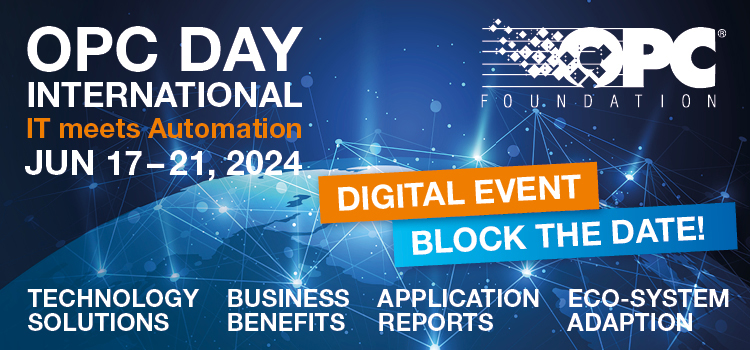Event Details
OPC Day 2024 – International
Date: 06/17/2024
Location:
Webinar
Webinar / International
Map and Directions

Welcome to the “OPC Day 2024 – International” – for the fifth time as a digital event.
The OPC Foundation will host the digital event from June 17-21, 2024 with 3 hours per day.
Each session will be held twice in different time zones to serve Americas, Europe and Asia.
- Europe/Asia slot: 08:00am – 11:00am CEST
- Americas / Europe slot: 09:00am – 12:00pm PDT | 6:00pm – 9:00pm CEST
Agenda
- The detailed agenda can be found here (soon)
https://opcfoundation-events.com/
Call for paper
- Download call for paper here
- We invite submissions across 6 conference tracks
- Paper submission
The submission system opens on February 1st, 2024.
Deadline: March 31st, 2024, 23:59 CET (Central European Time)
Notification of (conditional) acceptance: April 30th, 2024
. - When submitting your paper, please consider the following:
1. The language of the conference, and of all paper submissions, is English.
2. All papers need to be submitted to one – and only one – of the 6 conference tracks.
3. An author may be an author or co-author of a maximum of three (4) manuscripts. If an excessive number of papers are submitted, only the three first will be kept and the rest will be desk rejected.
4. Submissions must be original. Plagiarism checks will be done prior to sending out submissions for review.
Registration
- Please register below – the detailed conference login wll be shared later



